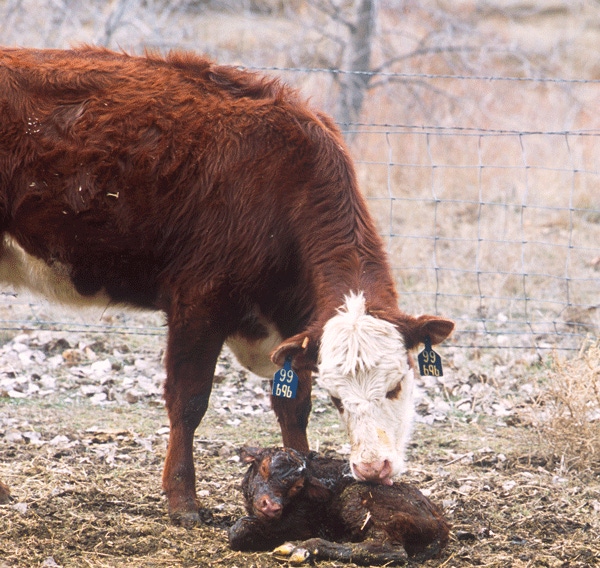
Arctic cold threatens Kentucky cattle herd
• A blast of arctic air will filter into the lower Ohio Valley this week and highs could only be in the 20s for most Kentucky locations. Combining these temperatures with the gusty winds will cause an extended period of livestock cold stress in the danger and emergency categories. Livestock producers should take precautions and try to understand how these conditions could impact their animals.
December 7, 2010

Kentucky is in the throes of an early-season arctic blast that could cause problems for livestock operations, ranging from frozen waterers to sick cattle.
“A deep, upper-level low-pressure system will linger over the northeastern United States through the next few days,” said Tom Priddy, University of Kentucky College of Agriculture meteorologist.
Priddy said a blast of arctic air will filter into the lower Ohio Valley this week and highs could only be in the 20s for most Kentucky locations. Combining these temperatures with the gusty winds will cause an extended period of livestock cold stress in the danger and emergency categories. Livestock producers should take precautions and try to understand how these conditions could impact their animals.
Low ambient temperatures can increase the energy requirements of livestock as they compensate to maintain core body temperature. Producers either need to increase their animals’ feed intake or increase the energy density of the diet by feeding higher quality hay or adding more grain or fat to the grain mix, said Jeff Lehmkuhler, University of Kentucky College of Agriculture beef specialist.
Lehmkuhler recommends producers continue to monitor cows during the wintertime and make sure to maintain the animals’ body condition.
• “Poor quality hay may not provide adequate energy to maintain gestating cows that are entering the third trimester,” he said. “Consider having the hay tested to determine if you need to supplement during times of possible cold stress, especially for enduring cold spells.”
• He said to consider separating younger and thinner cows that may not have the same internal insulation as conditioned older cows and supplementing them accordingly or offering them higher quality forage if available.
Protect them with windbreaks
• “Producers should move cows to fields with natural windbreaks or provide man-made windbreaks, which are not the same as a barn,” he suggested. “Poorly managed barns combined with poor ventilation may actually hamper efforts of improving the environmental conditions. Lastly, remember it is energy or calories that are really needed. If the protein level in the forage is adequate, do not make supplement decisions based on protein level; rather purchase the most affordable calories. Stay warm and keep the waterers flowing.”
“In these situations, hindsight is often 20/20 due to lack of preparation,” Lehmkuhler said. “I encourage folks to jot down the little things in these instances and tuck them away as reminders of what they can do during the warmer days of fall leading up to winter. The key is to remember to dig these notes out in the fall and start the preparation before the cold hits.”
The lower critical temperature (LCT) value for cattle is the lowest temperature or wind chill at which no additional energy is required to maintain core body temperature.
“As the temperature declines below this lower critical value, the maintenance energy value for the animal is increased to maintain core body temperature,” he said. “Animals maintain core body temperature by increasing their metabolism resulting in greater heat production, as well as other heat conservation strategies such as reducing blood flow to the extremities, shivering, and increasing intake.”
Cold stress results in approximately a 1 percent increase in the maintenance energy requirement for each Celsius degree or two degrees Fahrenheit below the LCT. Lehmkuhler said several things can influence lower critical temperature value.
“Both external and internal insulation influences the LCT. External insulation is basically the depth and thickness of the hair coat, condition of the hair coat and thickness of the hide,” he said. “Thin-hided breeds such as dairy breeds tend to have a lower insulating factor than thick-hided breeds like Herefords. The condition of the hair coat is extremely important as an external insulation barrier.”
He explained the hair coat acts as insulation similar to home attic insulation that traps air, enhancing the insulating value. If the hair is wet and full of mud, air is excluded, reducing the insulating value and increasing heat loss from the skin to the environment. The density of the hair coat and its moisture level impacts the windchill temperatures at which cold stress is considered mild, moderate or severe. As little as 0.1 inch of rain can immediately impact cold stress severity by matting the hair down reducing its insulating ability. Acclimation time, hide thickness, fat cover and other factors will also influence the degree of cold stress animals experience.
You May Also Like



